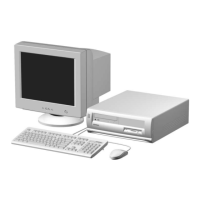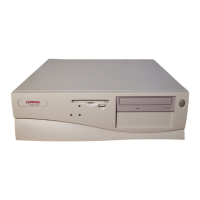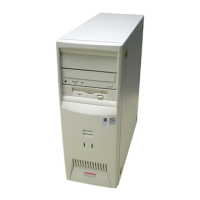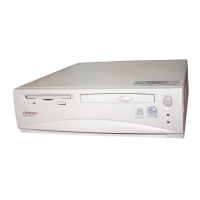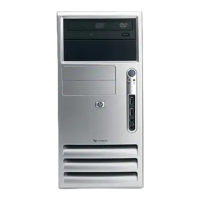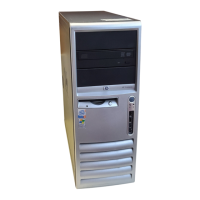Diagnostic Tools
4-23
Table 4-12
Computer Setup
Task Computer Setup Selection
View the product name, type/speed/stepping for both
processors, CPU serial number, system ROM date,
system board revision, installed memory size, and
asset tracking number.
Select File, then select System Information.
Set the system time and date. Select File, then select Set Time and Date.
View the currently installed drive A: (preinstalled
diskette drive) and drive B: devices and set resources
for diskette drives.
Select Storage, then select Diskette Drives.
Enable/disable diskette booting and diskette writing.
NOTE:
After saving changes to Removable Media,
the workstation will restart. Turn the workstation off,
then on, manually.
Select Storage, then select Removable Media.
View information regarding IDE devices connected to
the system.
NOTE:
ATAPI devices (CD-ROM, tape) are listed as
ATAPI devices.
Select Storage, then select IDE Devices.
Set hard drive to Ultra-DMA (Ultra-ATA), EDMA, or PIO
mode operation.
Select Storage for the IDE Drive Timing.
Specify the order of the hard drive between
embedded, SCSI, IDE, and installed third-party hard
drive controllers.*
Select Storage, then select Hard Drive Order.
Enable/disable IDE drive translation. Select Storage for the IDE Drive Translation.
Specify the boot order of installed peripheral devices
(diskette drive, hard drive, CD-ROM device, or
embedded NIC).
Select Storage, then select Boot Order.
Set the energy saver mode to Advanced, Disabled, or
Minimal.
Select Power
,
then select Energy Saver
.
Enable/disable timeouts or manually select timeout
values.
NOTE:
This selection appears only if energy saver
mode is set to Advanced.
Select Power
,
then select Timeouts
.
* The third-party adapter must have its own option ROM and it supports Boot Connection Vectors (BCV) through
the BIOS Boot Specification requirements.
continued

